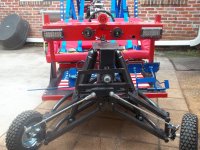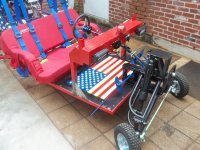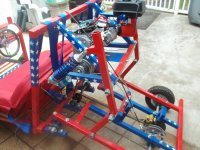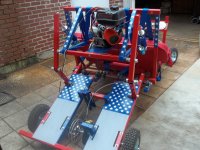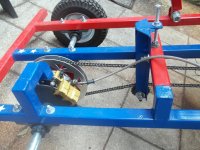SquidBonez
Active member
My plan is to use 1"x1" square tubing for an off road go kart/mini buggy. I want it to be as light as possible while also (obviously) being strong. My question is just about tubing thickness. How thick should I go? I've been basing a lot of my inspiration for this buggy off of this kart I found on a Google image search binge:

This kart was built entirely from 1"x1" 16 gauge tubing. But from what I hear, 16 gauge is a little thin for something like this (although don't quote me on that). KartFab recommends 11 gauge for their DIY go kart plans (which are much simpler than the kart above, just a solid frame. Spidercarts uses 14 gauge 1-1/4" square tubing for their Arachnid/Granddaddy karts. That being said, what's a good balance of strength vs weight for 1" square tubing? Keep in mind I will also have suspension arms/swingarm to worry about, so should I go thicker, thinner, or same as the main frame tubing on them?
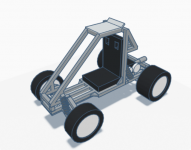
For reference, here is a basic rough model of the frame I plan to build. Subject to change, but just to give an idea.

This kart was built entirely from 1"x1" 16 gauge tubing. But from what I hear, 16 gauge is a little thin for something like this (although don't quote me on that). KartFab recommends 11 gauge for their DIY go kart plans (which are much simpler than the kart above, just a solid frame. Spidercarts uses 14 gauge 1-1/4" square tubing for their Arachnid/Granddaddy karts. That being said, what's a good balance of strength vs weight for 1" square tubing? Keep in mind I will also have suspension arms/swingarm to worry about, so should I go thicker, thinner, or same as the main frame tubing on them?

For reference, here is a basic rough model of the frame I plan to build. Subject to change, but just to give an idea.
Last edited:

